Whilst searching for something else entirely I stumbled across these images and was struck by just how beautiful they are. The September 1984 (Vol 9, No 10) issue of BYTE magazine features cover artwork by Barbara Nessim and section pages by Liz Gutowski under direction of Barbara Nessim. Larger versions are at the bottom of this blog post.
They were drawn during a residency at Time Life in NYC, simply because that was the easiest way Barbara could gain access to a colour computer with suitable capabilities: a Norpak IPS-2 Videotex (NAPLPS/Telidon) system. This offered 6 drawing modes (arc, rectangle, circle, line, dot and polygon) and 12 colours, of which half where shades of grey, plus black and white. And at a resolution of 256x200. That equates to a computer system roughly equivalent to an Apple II running a rudimentary graphics application, in fact you could get an add-on card for the Apple II to give it full Norpak Telidon capabilities. The main benefit of the Norpak IPS-2 computer system was that it had pen/stylus input. The system comprised two monitors, one showed the artwork and the other showed the software status menu system. The software was controlled by keyboard and the points that specify the shapes were entered using the pen input.
My first thought was “such cool pixel art!” but a little bit more reading shows that they are actually vector illustrations. NAPLPS is an early graphics format which could represent both text and vector graphics with all coordinates and other properties - such as size, fill pattern, density - encoded as ASCII for easy transmission. It was designed to display information on TVs, and also used for display on terminals, in BBS software, and on the Prodigy online service. Readers from around the world might be more familiar with Teletext, which is a close relative of Videotex.
Doing pure illustration using a system meant for creating pages of information is exactly the type of software subversion I love to discover!
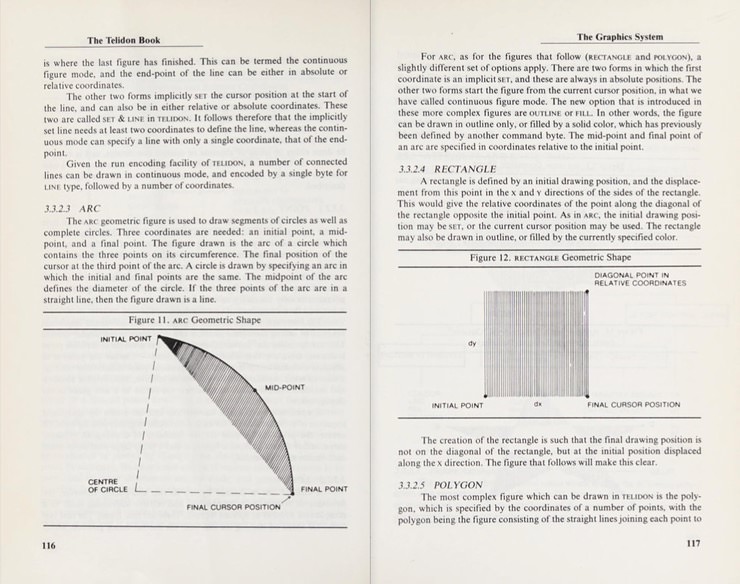
Barbara Nessim is a name I was already familiar with, as I’d seen her mentioned and interviewed in Verbum magazine, COMPUTE magazine, in various books about illustration, and regarding her groundbreaking interactive art exhibition/installation Random Access Memories (1991/2) - which addressed world issues such as migration and population growth and allowed visitors to operate a Macintosh containing the work, selecting images and printing their own customised booklet of her work with their choice of national flag on the cover. Source 1 and 2
Whilst I had seen other early computer work by Barbara - portraits, nudes, abstract (all of which are worth checking out!) - I had never seen work quite like these images from BYTE.
The chunky scan-line gaps in between the rows of pixels are the result of these images being photographs of the monitor on which they were displayed. Screenshots had existed since the 1960s but in the 1980s getting such an image off a mainframe was not yet easy or universal. Instead images were saved by pointing a camera at the screen, in this case a Polaroid Palette Video Image Recorder, capturing the image on 35mm slide film, and printing them by cibachrome process. Which is really saying something! Of course, I think the photos are much better than screenshots because of the scan-lines, the phosphor glow, the bleeding of colours, and the general analog feel to the whole thing.
Barbara was one of few people to embrace computers for art in the early-1980s, when the rest of the art world considered them at best a “fad” and at worst a threat to their existence. Before and after the 1980s Barbara carved out a hugely successful career for herself, encompassing many different forms of art, teaching and activism. She continues to create and exhibit her art.
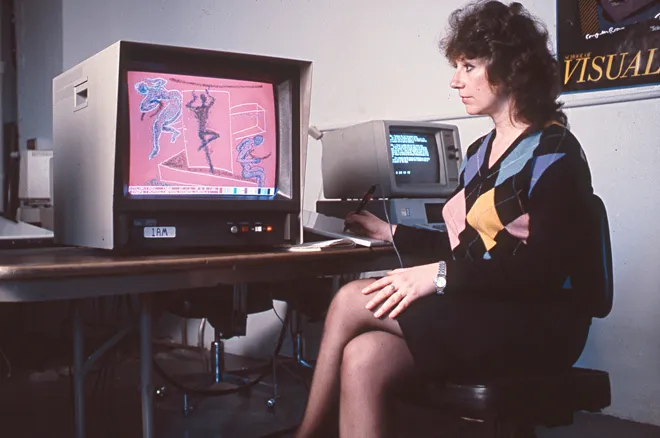
Further reading (chronological)
- U&lc (Upper & Lower Case) Magazine, Vol. 10, No. 4 (1983) Essential reading. “From pencils to pixels: artist Barbara Nessim explores the new tool” by Marion Muller. Published at a time when there was great unease about the arrival of computers in the world of graphics. This is a fantastic piece that goes into how the works were created, even down to which tools or shapes were used to draw particular aspects of a drawing and how they were layered, and mostly shows Barbara’s love for the arc tool! It also describes the IPS-2 computer system. and look at that page layout!
- BYTE magazine, Vol. 08, No. 07 - Videotex (July 1983) 49 pages on Videotex and NAPLPS graphics. Excerpted PDF provided by the Telidon Art Project. Full magazine available at archive.org.
- Graphis 232 (1984) “Computer Images” Barbara writes a small introduction to a selection of computer art created by other artists. Notable for her description of how a Video Image Recorder works.
- Video: Face To Face (1984) a video made to document her work on the last night of her residency at Time Life, featuring the images loading and displaying in real-time. Very cool!
- Innovators of American Illustration (1986) an interview by Steven Heller.
- PC Computing Magazine (1988) “The Art of Barbara Nessim” by Carol Olsen Day showing the work Barbara did on the NEC PC-100 whilst in Japan, on her Commodore Amiga, and on her Macintosh Plus, plus mention of her Polaroid Palette video image recorder.
- The Education of an Illustrator (2000) an essay by Barbara Nessim on her thinking and process as an illustrator.
- Digital Creativity: Techniques for Digital Media and the Internet (2001) a short interview by Bruce Wands with details about her process.
- 3×3: The Magazine of Contemporary Illustration, Vol. 1, No. 3 (2004) Interview by Charles Hively, formerly of Graphis magazine. Touches on the timeless quality of Barbara’s human figures and has a succinct description of her digital work along with the challenges of showing it.
- Panel Borders: Barbara Nessim - a (comics) artful life (2013) interview by Alex Fitch looking through a comic book and sequential image lens.
- Communication Arts: Barbara Nessim (2014) interview by Anne Telford where Barbara speaks about archiving and keeping her work fresh.
- BGC Craft, Art & Design Oral History Project (2014) Essential reading. A great, long interview by Emily Banas. Barbara talks about her use of the IPS-2, Apple Macintosh, and Commodore Amiga.
- Video/Presentation: Barbara Nessim: From There to Here (2014) Essential viewing. Barbara talks about her work as a pioneer in using computer technology to make art. Featuring work done on a Japanese NEC PC-100 and Commodore Amiga. Also includes “Face to Face” and a Q&A afterwards with info about the IPS-2 work.
- Video: The Lost Art of Canada’s Doomed Pre-Internet Web (2015) Motherboard video about the Telidon/NAPLPS system, including footage of some cool art created using it.
- Video: SVA Career Development presents: Gloria Steinem and Barbara Nessim: In Conversation (2018) an evening of conversation featuring Gloria Steinem and Barbara Nessim as they discuss their lives as pioneering young women starting their careers in New York City.
- Audio: The Illustration Department: Barbara Nessim (2021) talks to Giuseppe Castellano about the early days of her illustrious career.
- DinaburgArts: Barbara Nessim (2021) profile by Jessica Eisenthal.
- Audio: Sighs & Whispers: Episode 21 (2021) Essential listening. An interview by Laura McLaws Helms. Includes Barbara describing how she operated the IPS-2 using a combination of keyboard commands and pen input.
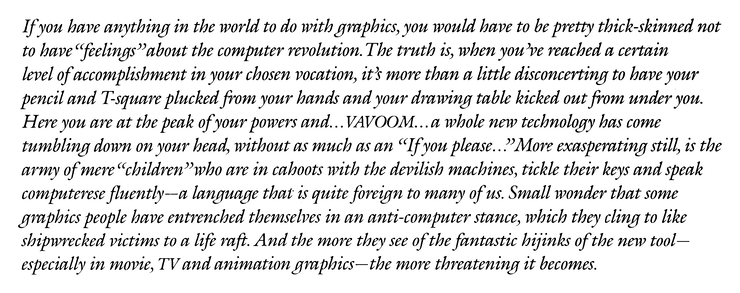

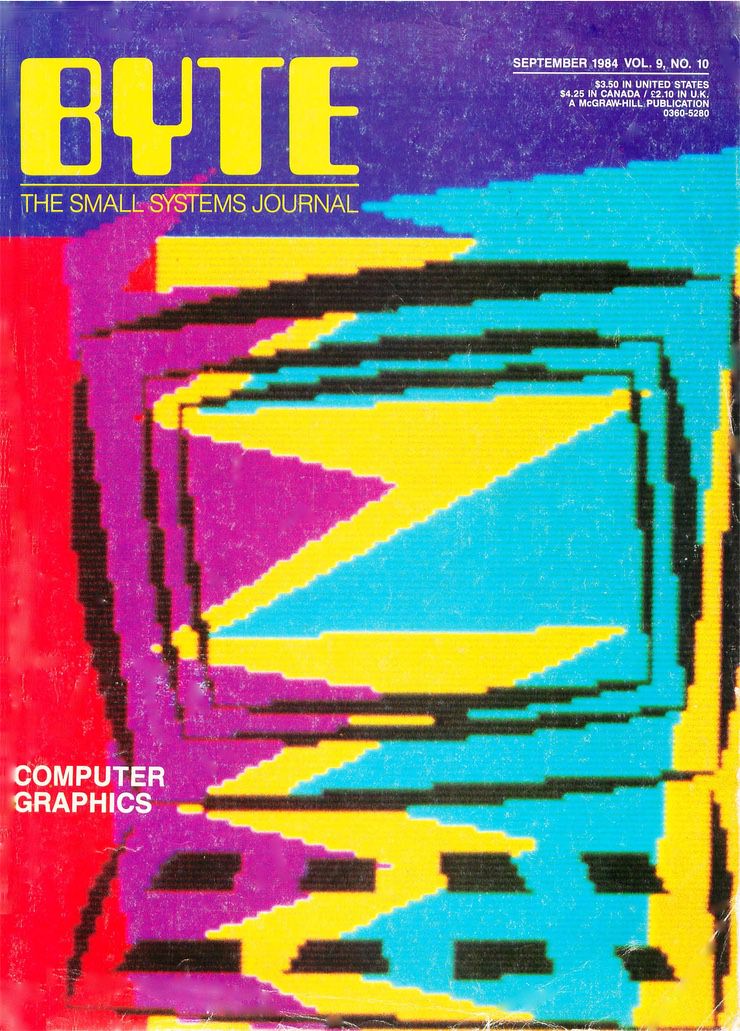
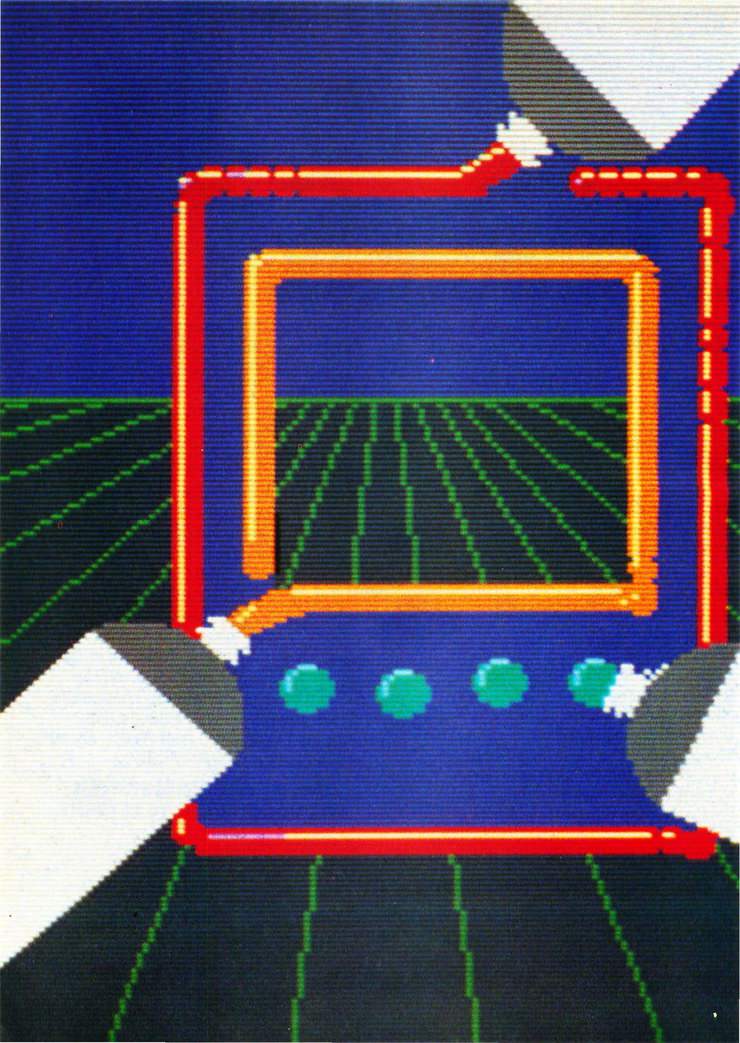
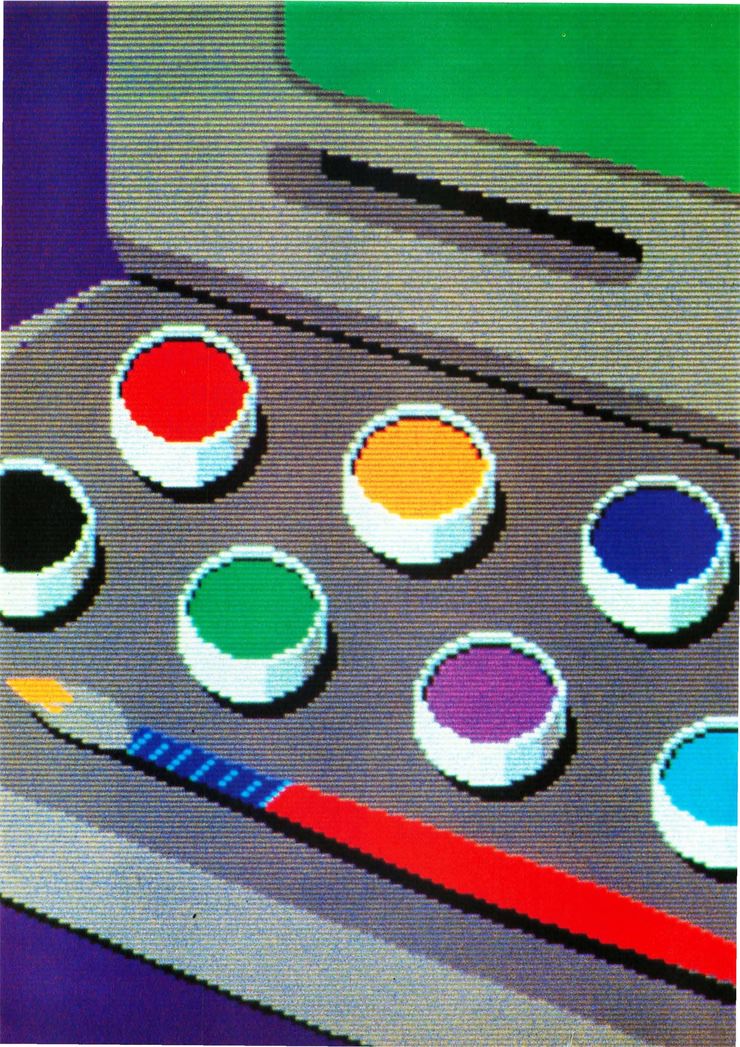
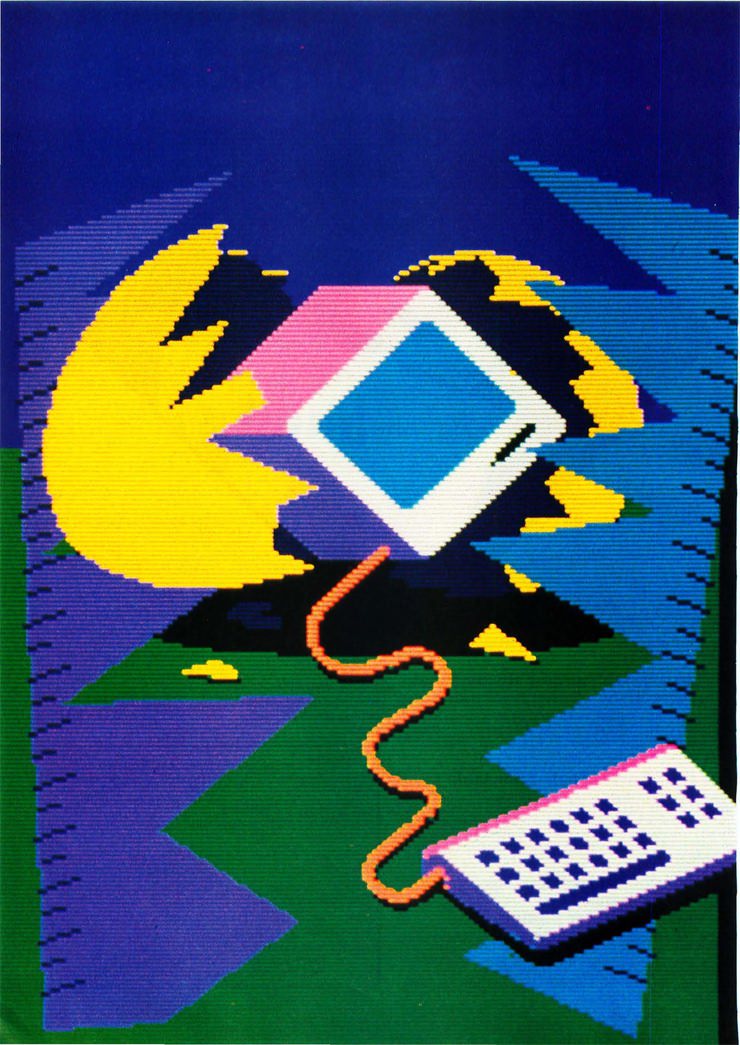
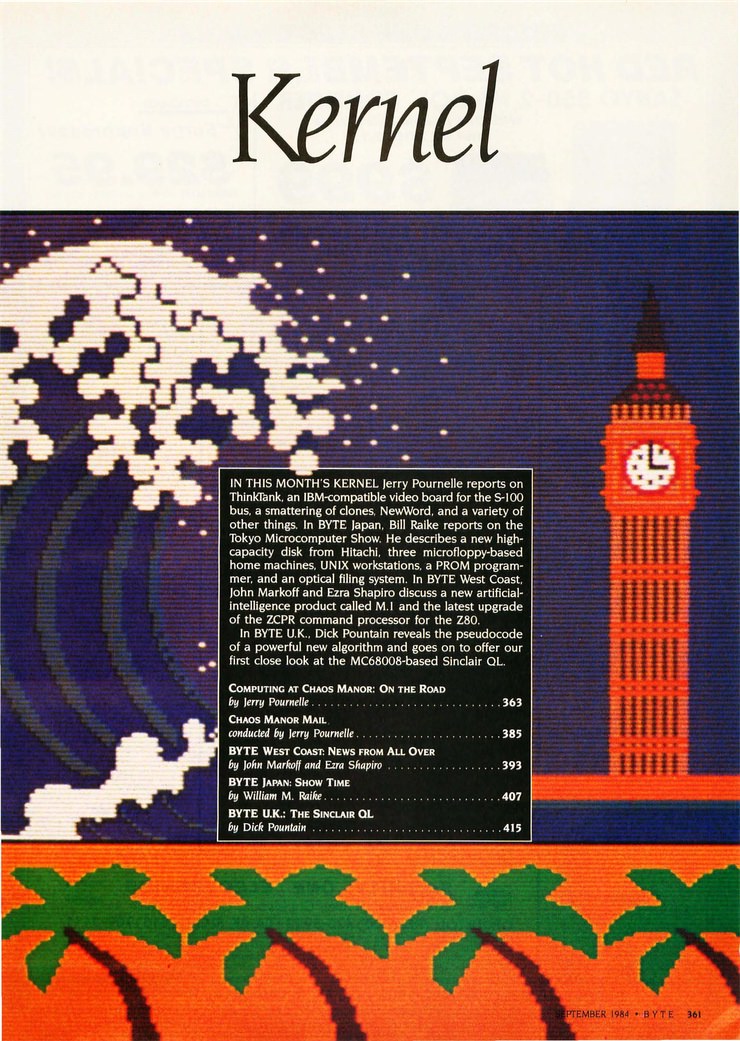
Originally published: 2023-11-09
--
Enjoyed this blog post? Please show some support.
--
Comments: @gingerbeardman